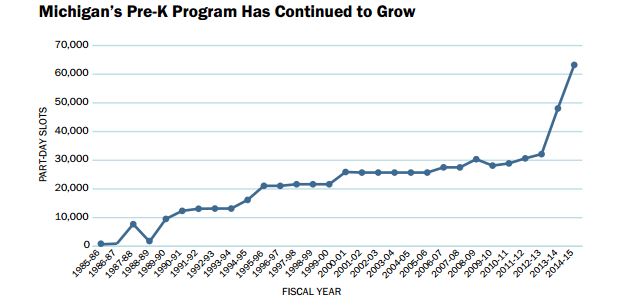
Many reports have been published on the importance of high-quality preschool programs, but there is little practical information available to help those trying to implement preschool programs. The Learning Policy Institute recently published a report on early childhood education that is intended to inform educators and policymakers about the essential elements of creating a high quality early education system. The report describes and analyzes how four states (Michigan, West Virginia, Washington, and North Carolina) have built successful early education systems in order to provide examples for how best to leverage resources and develop practices to improve learning opportunities for young children.
Michigan’s state-funded preschool program for 4-year old children, the Great Start Readiness program (GSRP), serves 38,213 students. This amounts to about half (51%) of children eligible for the program, and 8 out of 10 (80%) of participating students attend full day programs. GSRP’s success rate is clearly seen in the high school graduation rates of participating students – in 2012, over half (57%) of previous GSRP students graduated on time, while about 4 in 10 (42%) of students from the non-GRSP group did. This program is continuing to grow because of substantial investments from the state government.
Washington’s Early Childhood Education and Assistance Program (ECEAP) stands out for the extensive, state-funded wraparound services it provides to pre-school students. ECEAP’s method of taking care of the “whole child” by providing services like food and medical care in addition to education has yielded impressive test score gains in both reading and math from pre-K through 5th grade. ECEAP preschool participants boosted their reading scores by 7% and their math scores by 6%, gains almost twice as large as other early childhood education systems that are considered to be effective programs.
Children’s librarians can help connect families to high quality state-funded preschool programs by making information about these programs available during library programs for families with young children. Librarians can also help pre-K educators reach out to state policymakers in order to collaborate and create successful early education systems.
Find the full report here to read more case studies, view research briefs, and chart packets.
Note: This post is part of our series, “The LRS Number.” In this series, we highlight statistics that help tell the story of the 21st-century library.